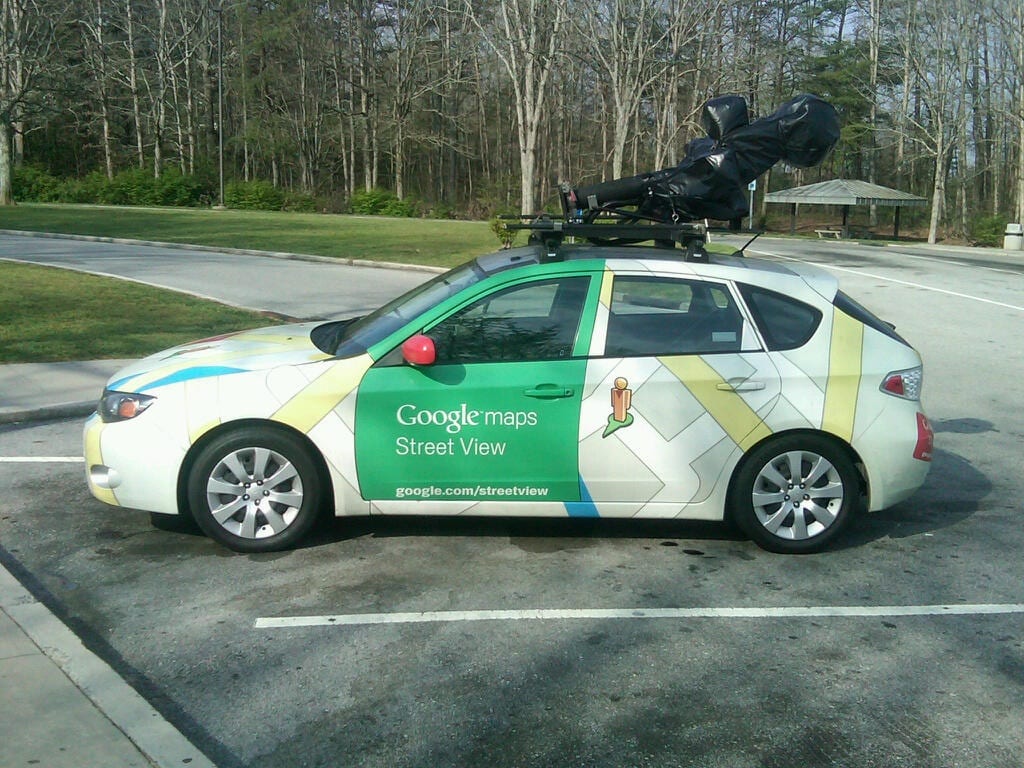 On one of my many road trips recently, I pulled over at a rest area for a brief stretch and caught a glimpse of something I’d never seen before. It almost felt as if I was getting to see the proverbial “man behind the curtain.” Sitting there in the parking lot next to me was a vehicle with an enormous and complicated camera mounted to the top – the Google maps Streetview car. Here it sat, the very low tech way that Google is creating high tech data -putting together a comprehensive map, neighborhood by neighborhood, seemingly one frame at a time by driving across country snapping pictures from the top of this simply modified car. Even though the data they went out to capture was time consuming and in small bits, their method seemed to be working.
On one of my many road trips recently, I pulled over at a rest area for a brief stretch and caught a glimpse of something I’d never seen before. It almost felt as if I was getting to see the proverbial “man behind the curtain.” Sitting there in the parking lot next to me was a vehicle with an enormous and complicated camera mounted to the top – the Google maps Streetview car. Here it sat, the very low tech way that Google is creating high tech data -putting together a comprehensive map, neighborhood by neighborhood, seemingly one frame at a time by driving across country snapping pictures from the top of this simply modified car. Even though the data they went out to capture was time consuming and in small bits, their method seemed to be working.
Jumping back in my car and having a bit more time to ponder, I began to think about how we are collecting data in the world of healthcare. As the industry continues to edge closer and closer to delivery and payment models based on value, alignment, and care coordination, the mad scramble to create and capture truly meaningful data is gaining speed. The approach to find the “holy grail” of data for most appears to be integration, integration, integration. Let’s make sure every physician, hospital, payer, and even patient are all on (or have access to) the same system with the same gigantic bucket of data. If we can just get everyone to push all of their data into the same place, surely we will be able to divine the answers we seek.
Google’s approach appears to be a bit different. Rather than trying to force everyone to push data into a common place, they are going out and pulling it in, bit by bit and coming up with a very comprehensive, very usable to tool that provides direction and gives meaningful information. Our approach in healthcare to getting everyone to push their data into a common place would be like Google asking everyone in the country to please send a picture of their home to Google headquarters, hoping we all use the same size, format, color, and resolution.
How might this model look in healthcare? Each time a patient refills their blood pressure meds, what if their blood pressure was recorded at the pharmacy and sent directly back to the physician? Could this allow us to begin to track the outcomes of individual medications in a more meaningful, real time way? What if our focus was not a common electronic medical record structure that is primarily physician focused, but on creating a common portal for all patients to share data with all physicians? Would we actually be getting better and more meaningful clinical data from the field as opposed to capturing well coded data that is designed, at least in part, to maximize our reimbursement?
I understand the privacy and operational challenges that something like this would create. It would truly force us to question the model we are currently using, but isn’t that the point? If we continue to place all of our focus on building the perfect, fully integrated information system, we may be missing the opportunity to capture smaller, discrete pieces of information that may not initially provide us with the “big picture,” but will certainly give us useful direction along the way.

